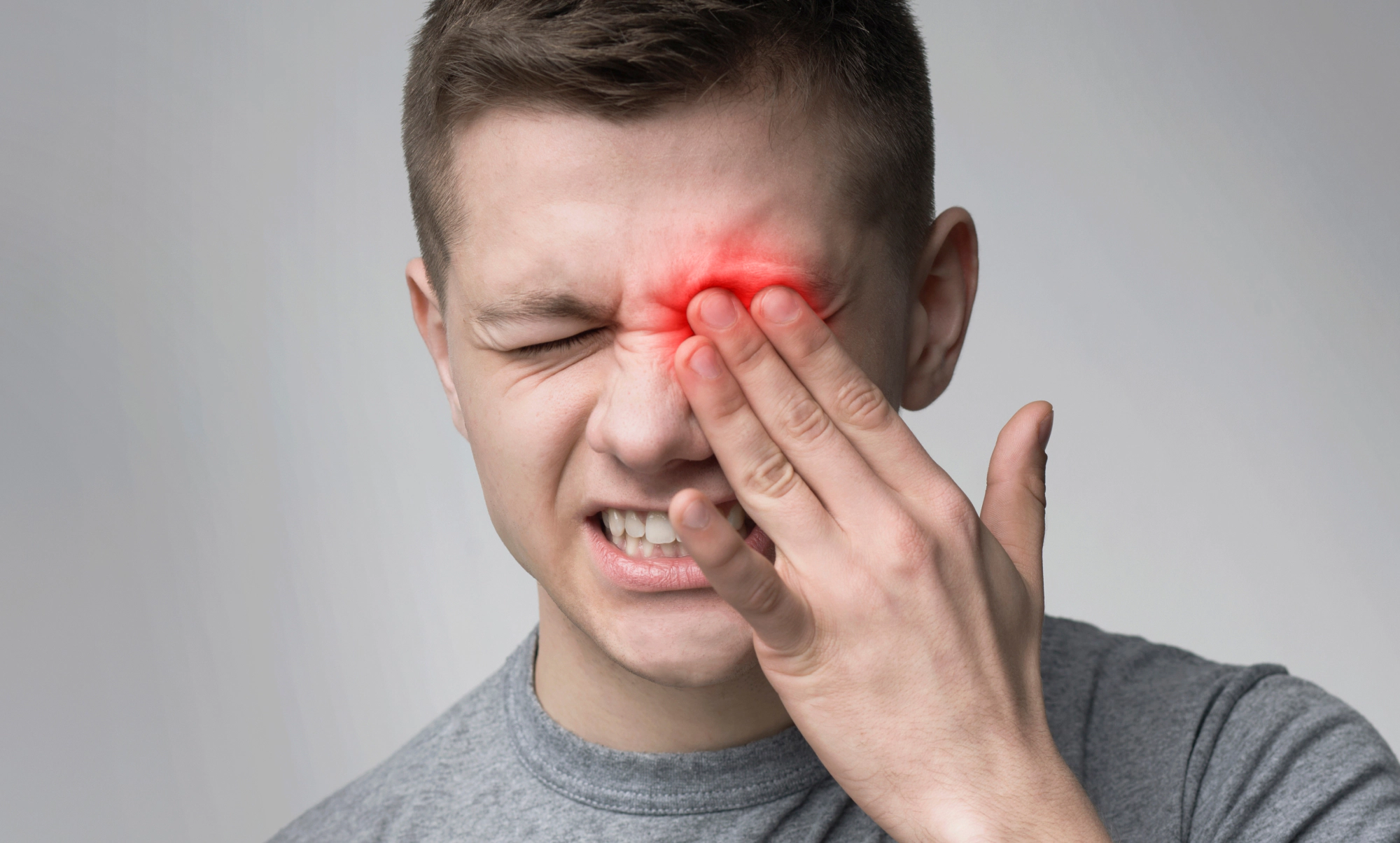
How can you tell when common eye injuries are actually medical emergencies? There are many different types of eye trauma, and they can all vary in severity. Some cases are just minor issues that will go away with an ice pack or flushing the eye with water, while other instances can result in serious eye damage and require immediate medical attention.
We understand that it can be tempting to “tough it out” and see if the pain and discomfort will go away on their own — however, failing to receive eye injury treatment in a timely fashion can lead to chronic conditions, complications, or sometimes even blindness. Therefore, it’s crucial to learn to recognize when common eye injuries require medical care so that you can get the treatment you need.
What is a minor eye injury?
Before we dive into what injuries constitute an eye emergency, we must first answer the question, what is a minor eye injury? A minor eye injury typically refers to any eye injury that does not result in eye damage and therefore can be treated at home.
For example, if you’re thinking, “Ouch, my eyes hurt” it’s possible that you may have scratched your eye, have swollen eyelids, or have gotten conjunctivitis (pink eye). These common eye injuries or conditions usually do not warrant medical intervention as they can clear up within a few days or can be treated with over-the-counter medications like eye drops or at-home remedies like a cold compress. In some cases, treatment for pink eye may include antibiotics if the condition does not clear up within a few days.
What is considered an eye emergency?
An eye emergency would include any injury or infection that could result in severe eye damage or vision loss if not treated promptly by a medical professional. These injuries are often classified as severe cuts, burns, and blunt injuries that can put your vision at risk.
Symptoms relating to the eyes that require medical attention include but are not limited to:
- Severe eye pain or burning sensation
- Sensitivity to light
- Eye swelling
- Unusual size or shape of the pupil
- The injured eye is sticking out
- Double vision
- Severe itching
- Irritation
- Headache
These symptoms could be the result of a number of injuries or ailments and they can be situational. For example, if you happen to get sand in your eye at the beach this summer, this may not be a cause for a medical concern, even if you notice several of the symptoms above if an eye flush solution can get all of the sand particles out. However, if you still feel sand particles in your eye accompanied by any of the symptoms listed above after trying home remedies, have a doctor check out your eye to make sure there is no damage.
What are the most serious eye injuries?
If any of the following eye injuries happen to you, go to the emergency room as soon as possible for eye injury treatment to prevent permanent or further eye damage. Just to name a few of the most serious, yet common, eye injuries we deal with in the emergency room:
- Foreign object in the eye: Small or large, it is unwise to try and remove a foreign object from your eye at home.
- Large or severe eye scratches (corneal abrasion)
- Chemical eye burns: If you have a chemical in your eye, wash your hands thoroughly with soap and water, hold your eyelid open, and flush the affected eye with cold water for 10 to 15 minutes, then go to the emergency room.
- Internal bleeding in the eye (hyphema)
- Blood leakage in the eye from a popped vessel (subconjunctival hemorrhage)
- Retinal detachment
- Fractures or breaks in the bones surrounding the eye, usually caused by forceful trauma to the face
The eye is a very sensitive organ that can be easily damaged if not treated properly. This is why it is important to seek help from a medical professional to prevent vision loss or permanent damage to the eye if any of these common eye injuries occur. An emergency room is your best option as you will likely be seen and treated in a timely manner.
What to expect from your ER visit for an eye injury
The moment you realize that an injury to your eye has occurred, remain calm. Why is it important to stay calm in an emergency? To put it plainly, staying calm helps you and others to quickly assess the situation and determine the next course of action. Ask someone to bring you to the emergency room, or if the situation is dire, have them call 911.
Do not rub your eyes, remove any stuck objects, or remove any contact lenses if you’re wearing them. Wait to receive emergency care, and let your medical provider remove them for you if necessary. Try to cover your eye(s) as best as you can while you wait for help.
Once you arrive at the emergency room, your doctor will examine your eyes, inquire about the injury and your symptoms, and create an eye injury treatment plan based on your condition. Treatments for common eye injuries may include washing out your eye with a special solution or, in more severe cases, surgery may be necessary to treat the injury or infection.
Once your treatment plan is finalized, your doctor may prescribe medications or refer you to an eye specialist for a second opinion. They will likely give you guidelines to follow such as wearing sunglasses when outdoors to protect your eyes and avoiding eye makeup, creams, or strenuous exercise.
Complete Care cares for both minor and severe common eye injuries
Common eye injuries, both minor and severe, should not be ignored. Risking serious or permanent eye damage by not seeking medical help when something seems wrong is never a good idea. Your eyes are important organs and understanding how to take care of them can help you maintain healthy vision and overall eye health.
If you are in need of eye injury treatment, head to a Complete Care emergency room facility for fast and quality care. Our emergency facilities are located all over the state of Texas (Austin, Corpus Christi, Dallas/Fort Worth, East Texas, Lubbock, and San Antonio) and in Colorado Springs. We’re open 24/7 and can handle your emergency in no time.
More Helpful Articles by Complete Care:
- When to Go to the ER for a Bike Accident
- How to Avoid Food Poisoning This Summer
- How to Spot Hypertensive Emergency Symptoms
- Solutions to Work Stress and Burnout
- When To Get a Tetanus Shot After a Cut
